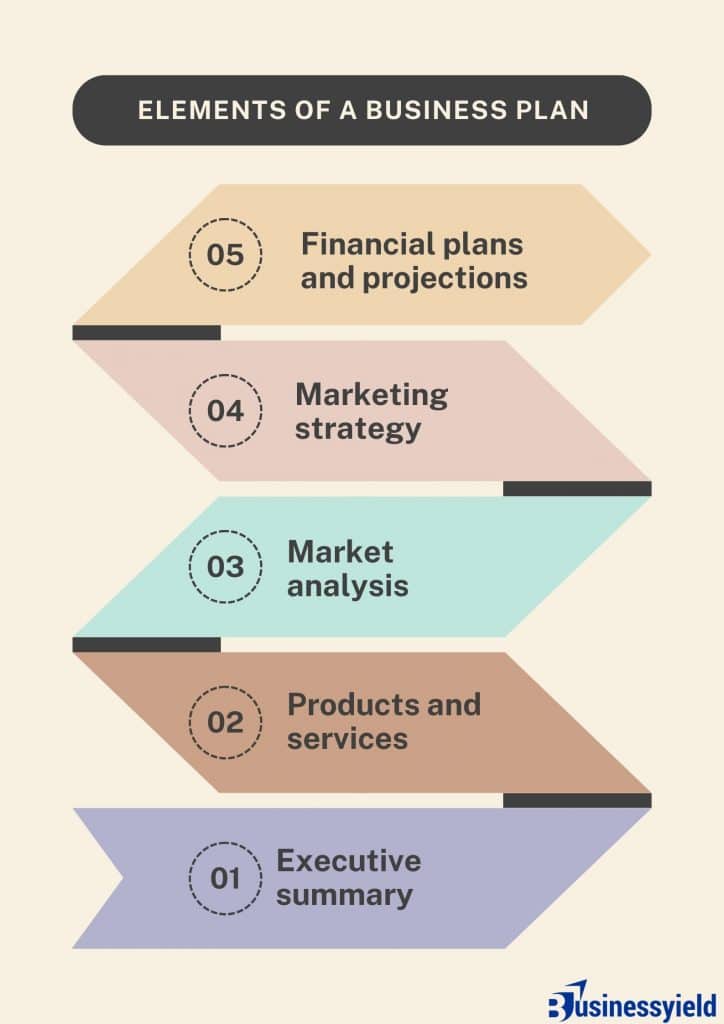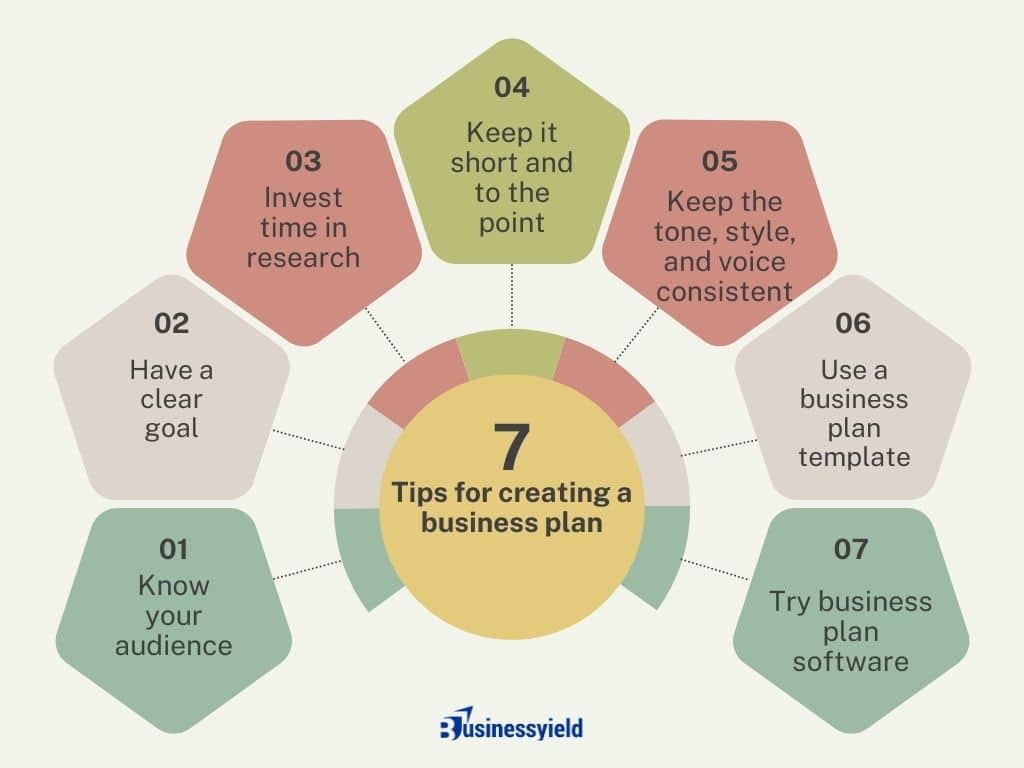What comes next after creating a business plan?
I mean, you’re an entrepreneur. You have a vision, and you’ve come up with your mission statement. You have your goals and objectives, as well as a plan on how you want to run your business and what the general overview will look like. So, what next?
Well, you’re not just going to sit down and expect the plans to enact themselves, that’s for sure. But first, what is a business plan? And if you haven’t created one already, how do you go about it?
Key takeaways
A business plan is a document describing a company’s business activities and how it plans to achieve its goals.
Startup companies use business plans to get off the ground and attract outside investors.
For established companies, a business plan can help keep the executive team focused on and working toward the company’s short- and long-term objectives.
Creating a business plan is just the first step in your entrepreneural journey.
What is a business plan?
A business plan is a document that explains what your business does, how it makes money and who its customers are. Internally, writing a business plan should help you clarify your vision and organize your operations. Externally, you can share it with potential lenders and investors to show them you’re on the right track.
Business plans can be of benefit to both startups and well-established companies. For startups, a business plan can be essential for winning over potential lenders and investors. Established businesses can find one useful for staying on track and not losing sight of their goals. This article explains what an effective business plan needs to include and how to write one.
Business plans are living documents, which means it is okay for them to change over time. Startups may update their business plans often as they figure out who their customers are and what products and services fit them best. Mature companies might only revisit their business plan every few years.
There are numerous benefits to creating (and sticking to) a well-conceived business plan. These include being able to think through ideas before investing too much money in them and highlighting any potential obstacles to success. A company might also share its business plan with trusted outsiders to get objective feedback. In addition, a business plan can help keep a company’s executive team on the same page about strategic action items and priorities.
Types of business plans
Business plans can take many forms, but they are sometimes divided into two basic categories: lean startup and traditional business plans. According to the U.S. Small Business Administration (SBA), the traditional business plan is the more common of the two.
Traditional business plans tend to be much longer than lean startup plans and contain considerably more detail. As a result, they require more work on the part of the business, but they can also be more persuasive (and reassuring) to potential investors.
Lean startup business plans, on the other hand, use an abbreviated structure that highlights key elements. These business plans are short—as short as one page—and provide only the most basic detail. If a company wants to use this kind of plan, it should be prepared to provide more detail if an investor or a lender requests it.
Business plans, even among competitors in the same industry, are rarely identical. However, they often have some of the same basic elements, as we describe below.
Elements of a business plan
The length of a business plan can vary greatly from business to business. Regardless, it’s best to fit the basic information into a 15- to 25-page document. Other crucial elements that take up a lot of space—such as applications for patents—can be referenced in the main document and attached as appendices.
These are some of the most common elements in many business plans:

Executive summary
This section introduces the company and includes its mission statement along with relevant information about the company’s leadership, employees, operations, and locations.
Products and services
Here, the company should describe the products and services it offers or plans to introduce. That might include details on pricing, product lifespan, and unique benefits to the consumer. Other factors that could go into this section include production and manufacturing processes, any relevant patents the company may have, as well as proprietary technology.
Information about research and development (R&D) can also be included here.
Market analysis
A company needs to have a good handle on the current state of its industry and the existing competition. This section should explain where the company fits in, what types of customers it plans to target, and how easy or difficult it may be to take market share from incumbents.
Marketing strategy
This section describes how the company plans to attract and keep customers, including any anticipated advertising and marketing campaigns. It should also describe the distribution channel or channels it will use to get its products or services to consumers.
Financial plans and projections
Established businesses can include financial statements, balance sheets, and other relevant financial information. New businesses can provide financial targets and estimates for the first few years. Your plan might also include any funding requests you’re making.
How to write a business plan
There are now two ways you can write your business plan. The traditional route, and the most common, is likely what you’ll be using. The traditional plan contains far more details and should be used for most scenarios.
You can follow the checklist below to create one:
Traditional business plan
Alternatively, you can explore a lean startup plan, which are one-pagers that detail your business only at the highest level. This is most appropriate for businesses that are likely to change quickly or are on a very, very short timeline.
Lean startup business plan
What comes next after creating a business plan?
Financing
Now that you have a solid business plan in hand, it’s time to start thinking about financing your business. Funding your startup can be a significant challenge for many entrepreneurs, but there are plenty of options available. Here are some of the most common financing options that you might consider:
- Bootstrapping: This involves financing your business through personal savings or using credit cards to get started. Bootstrapping can be a risky strategy, but it allows entrepreneurs to retain full ownership of their businesses.
- Loans: Loans are a common way to finance a business. You can obtain a loan from a bank, credit union, or online lender. To secure a loan, you will need to have a strong credit score and provide collateral.
- Investors: Investors can provide funding for your business in exchange for equity in your company. There are many types of investors, including venture capitalists, angel investors, and crowdfunding.
- Grants: Grants are available from government agencies, nonprofit organizations, and private foundations. They are typically awarded based on specific criteria, such as the type of business or industry.
Each financing option comes with its own pros and cons, and you’ll need to determine which option is best for your business. Consider factors such as interest rates, repayment terms, and the impact on your equity.
Getting funding is a critical step in turning your business plan into a reality. Research and consider all of your financing options, and don’t be afraid to seek advice from professionals.
Legal requirements
Starting a business comes with a lot of legal requirements that you need to meet to ensure your business is compliant with the law. The most important legal requirements you need to consider are:
- Business structure: You’ll need to choose a legal structure for your business. The most common legal structures are sole proprietorship, partnership, limited liability company (LLC), and corporation.
- Register your business: Register your business with your state and local authorities. This process typically involves obtaining a business license and tax ID number, and registering your business name.
- Permits and licenses: Depending on the type of business you’re starting, you may need to obtain permits or licenses. For example, if you’re opening a restaurant, you’ll need to obtain a food service permit from your local health department. Be sure to register trademarks and copyrights, and secure your intellectual property.
- Taxes: You’ll need to register for federal, state, and local taxes. It’s important to keep accurate financial records to ensure that you’re paying the correct amount of taxes.
- Employment laws: If you plan to hire employees, you’ll need to comply with employment laws such as minimum wage, overtime pay, and employee benefits.
Meeting all the legal requirements can be a daunting task, but It is very important to make sure that your business is legal. It’s a good idea to consult with a lawyer or an accountant to ensure that you’re meeting all the legal requirements for your business.
Setting up the business
Once you’ve secured funding and taken care of legal requirements, it’s time to set up the physical infrastructure of your business. Here are some must considerations:
- Choose a location: Whether you need an office space or a storefront, choosing the right location is critical. Think about factors like foot traffic, accessibility, and proximity to your target audience.
- Purchase equipment and inventory: Depending on your business, you’ll need to purchase equipment and inventory to get started. Make a list of everything you’ll need and create a budget for these expenses.
- Hire employees: If you need employees to run your business, now is the time to start hiring. Think about the skills and experience you need and create job descriptions for each position.
- Create a website: Your website is your online storefront, and it’s an essential tool for marketing your business. Work with a web developer to create a website that’s easy to navigate and reflects your brand identity.
- Set up your accounting and bookkeeping systems: You’ll need to keep accurate financial records to run your business. Set up an accounting and bookkeeping system, and hire an accountant or bookkeeper to help you manage your finances.
Remember that setting up a business is a process that takes time, so be patient and stay focused on your long-term goals.
Solid marketing strategy
A solid marketing strategy is crucial for any business, and it starts with market research. As a business owner, you need to understand your target audience and what they need from your products or services. Here’s how to get started:
- Define your target audience: Who are your potential customers, and what are their needs and preferences? Once you understand your target market, you can tailor your marketing messages to resonate with them.
- Develop a value proposition: Your value proposition is a statement that outlines what makes your product or service unique and valuable. It should be concise and communicate the key benefits of your offering.
- Choose marketing channels: There are many marketing channels to choose from, including social media marketing, email marketing, and content marketing. Choose the channels that are most effective for your target audience.
- Develop a content strategy: Your content strategy should outline the topics and themes you’ll focus on in your marketing materials. It should also include a schedule for publishing your content and a plan for promoting it.
- Monitor your marketing performance: You should track the performance of your marketing campaigns and adjust your strategy as needed. Use metrics like website traffic, conversion rates, and social media engagement to measure your success.
Social media marketing is a particularly important aspect of modern marketing. You can use Facebook, Twitter, and Instagram to reach a lot of people and talk to them in a way that feels personal. It’s important to use social media effectively and target your messaging to your specific audience.
Brand development
Brand development is all about creating a brand image and identity that resonates with your target audience. Here are some important steps to consider when developing your brand:
- Define your brand: What do you want your brand to stand for? What values do you want to convey? Define your brand before you start creating any marketing materials or campaigns.
- Create a brand message: Your brand message should be a clear, concise statement that communicates the value of your brand to your target audience.
- Develop your visual identity: Your brand’s visual identity includes your logo, color palette, and typography. It’s important to create a cohesive visual identity that reflects your brand’s personality and values.
- Build a brand voice: Your brand voice is how you communicate with your target audience. It should be consistent across all your marketing materials and social media channels.
- Develop a marketing plan: Your marketing plan should outline your marketing goals, target audience, and the channels you’ll use to reach your audience. It should also include a budget for your marketing activities.
- Monitor your brand’s reputation: It’s important to monitor your brand’s reputation online and respond to any negative feedback. You can use tools like Google Alerts and social media monitoring tools to keep track of what people are saying about your brand.
If you develop a strong brand, it will help your business be different from other businesses like it. It’s a crucial part of building a successful business and should be a top priority for any entrepreneur.
Finances
One of the most important aspects of starting a business is managing your finances. Here are some tips to help you stay on top of your finances:
- Set a budget: Determine how much money you need to start and operate your business. Create a budget and stick to it.
- Keep track of your expenses: Keep track of all your expenses, including rent, utilities, supplies, and other costs. This will help you stay on top of your finances and avoid any surprises.
- Consider outsourcing: Consider outsourcing tasks that are not within your expertise, such as bookkeeping, accounting, or payroll. This can save you time and money in the long run.
- Seek funding: Look for ways to finance your business, such as obtaining a loan from a bank, seeking investors, or applying for grants.
Your management of financial details can make or break a business. You can stay in control of your money by knowing how much money you have, what you spend it on, and getting help from others when needed. This will help you avoid any money problems that might come up.
Staying focused
Starting a new business is not for the faint of heart. It requires a lot of hard work, dedication, and perseverance. One of the keys to a successful venture is staying focused on your goals and remaining committed to your business plan. Here are some tips to help you stay focused:
- Create a schedule: Make a schedule for your workday and stick to it. This can help you stay organized and focused on your tasks.
- Take breaks: Taking breaks throughout the day can help you recharge and stay focused. Go for a walk, meditate, or do something that helps you relax and clear your mind.
- Stay motivated: Stay motivated by reminding yourself of your long-term goals and the reasons why you started your business in the first place.
- Celebrate your wins: Celebrate your accomplishments and milestones, no matter how small they may seem. This can help you stay motivated and focused on your long-term goals.
Tips for creating a business plan
There are a few best practices when it comes to creating a business plan. While your plan will be unique to your business and goals, keep these tips in mind as you write.

1. Know your audience
When you know who will be reading your plan—even if you’re just writing it for yourself to clarify your ideas—you can tailor the language and level of detail to them. This can also help you make sure you’re including the most relevant information and figure out when to omit sections that aren’t as impactful.
2. Have a clear goal
When creating a business plan, you’ll need to put in more work and deliver a more thorough plan if your goal is to secure funding for your business versus working through a plan for yourself or even your team.
3. Invest time in research
Your ideas and vision will primarily inform sections of your business plan, but some of the most crucial information you’ll need requires research from independent sources. This is where you can invest time in understanding who you’re selling to, whether there’s demand for your products, and who else is selling similar products or services.
4. Keep it short and to the point
No matter who you’re writing for, your business plan should be short and readable—generally no longer than 15 to 20 pages. If you do have additional documents you think may be valuable to your audience and your goals, consider adding them as appendices.
5. Keep the tone, style, and voice consistent
This is best managed by having a single person write the plan or by allowing time for the plan to be properly edited before distributing it.
6. Use a business plan template
You can also use a free business plan template to provide a skeleton for writing a plan. These often guide you through each section from financial projects to market research to mission statement ensuring you don’t miss a step.
7. Try business plan software
Writing a business plan isn’t the easiest task for business owners. But it’s important for anyone starting or expanding a business. Fortunately, there are tools to help with everything from planning, drafting, creating graphics, syncing financial data, and more. Business plan software also has business plan templates and tutorials to help you finish a comprehensive plan in hours, rather than days.
A few curated picks include:
- LivePlan: the most affordable option with samples and templates
- Bizplan: tailored for startups seeking investment
- Go Small Biz: budget-friendly option with industry-specific templates
Why do business plans fail?
A business plan is not a surefire recipe for success. The plan may have been unrealistic in its assumptions and projections to begin with. Markets and the overall economy might change in ways that couldn’t have been foreseen. A competitor might introduce a revolutionary new product or service. All of this calls for building some flexibility into your plan, so you can pivot to a new course if needed.
How frequently a business plan needs to be revised will depend on the nature of the business. A well-established business might want to review its plan once a year and make changes if necessary. A new or fast-growing business in a fiercely competitive market might want to revise it more often, such as quarterly.
In conclusion
Any new business should have a business plan in place prior to beginning operations. In fact, banks and venture capital firms often want to see a business plan before they consider providing a loan or providing capital to new businesses.
Even if a business isn’t looking to raise additional money, a business plan can help it focus on its goals. A 2017 Harvard Business Review article reported that “Entrepreneurs who write formal plans are 16% more likely to achieve viability than the otherwise identical nonplanning entrepreneurs.”






